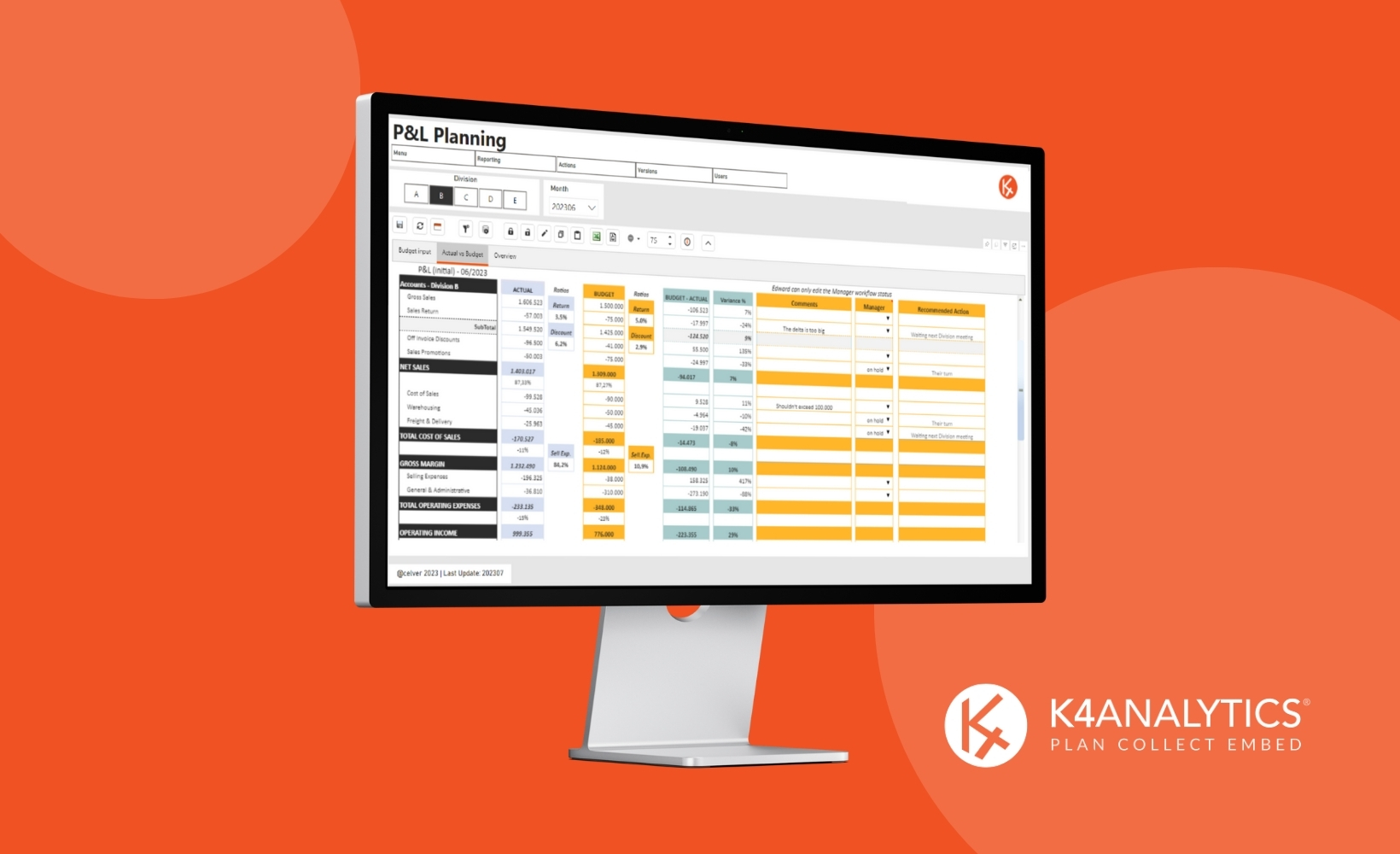The ability to strategically manage revenue in such a competitive sector as hospitality has become a key advantage that can make a significant difference. This is where Enterprise Performance Management (EPM) emerges as an indispensable tool for maximizing revenue through data-driven analysis and planning.
This approach allows hotel managers to monitor and adjust key indicators in real time, providing the ability to anticipate trends and make informed decisions that drive profitability.
In this article, we discuss how EPM can transform hotel management, from optimizing pricing and customer segmentation to evaluating the performance of distribution channels.
Key Indicators for Revenue Planning in Hotels
The foundation of any effective revenue strategy in the hospitality sector lies in analyzing key performance indicators (KPIs). These metrics help hotels understand their operational performance and provide critical insights for continuous improvement.
The ultimate goal is simple: to maximize revenue generated from available rooms by offering the right room at the right price at the right time.
This is achievable through tools that allow continuous measurement and tracking of these key KPIs, facilitating the identification of opportunities and areas for improvement.
Here are some of the most important indicators to consider in hotel revenue management.
Revenue from Accommodation
Accommodation remains the primary source of revenue for any hotel, and this is where EPM truly showcases its potential.
- Dynamic Pricing Adjustments: By leveraging real-time data, hotels can adjust their Average Daily Rate (ADR) and occupancy rate to maximize Revenue per Available Room (RevPAR). This enables agile management that quickly responds to changes in demand or competition.
- Precise Segmentation: EPM allows revenue analysis at a granular level—by day, semester, season, room type, hotel, etc. This level of detail facilitates strategic planning and personalized offers.
- Reducing Cancellations and No-Shows: By analyzing historical data, hotels can implement policies that minimize revenue loss from cancellations and unused reservations, such as requiring deposits or implementing more flexible cancellation policies.
Revenue from Breakfast and Food Services
The food and beverage sector represents a significant opportunity to increase revenue, particularly when managed with data-driven strategies:
- Menu and Service Optimization: By analyzing which dishes or services are most popular, hotels can refine their menus and improve conversion rates. This includes identifying the most profitable and sought-after products.
- Consumption Monitoring: With precise data on food and beverage consumption, waste can be reduced, and purchasing decisions optimized, leading to cost reductions without compromising quality.
Additional Revenue Streams
Beyond accommodation and food services, hotels can diversify their revenue streams through other strategies, such as:
- Cross-Selling: By leveraging customer behavior insights, hotels can encourage the purchase of additional services such as spa treatments, excursions, or room upgrades.
- Events and Meetings: Analyzing revenue generated from different types of events helps hotels optimize resource planning and maximize facility occupancy.
Revenue Management in Distribution Channels
Diversification and optimization of distribution channels are fundamental pillars of successful revenue management. With EPM, hotels can accurately evaluate and enhance channel performance through strategies such as:
- Optimizing Sales Channels: Identifying the most profitable channels (whether OTAs, traditional agencies, or direct sales) allows hotels to focus efforts on those that provide the most value. A detailed analysis of each channel’s performance facilitates informed decisions that improve profit margins.
- Reducing Commission Costs: Commissions associated with OTAs can significantly erode hotel revenue. EPM helps control and optimize these costs, seeking a balance between the volume of bookings generated and their impact on margins.
- Customer Segmentation by Channel: Through data analysis, hotels can design tailored offers for each customer profile based on their booking channel, while also ensuring rate parity. This is crucial for maintaining the perceived value of the hotel and avoiding pricing conflicts.
- Cost-Benefit Analysis: A detailed assessment of the cost of acquiring a customer through each channel, compared to the revenue generated, enables hotels to refine strategies and prioritize the most profitable channels.
Revenue Management Strategies and Their Implementation in EPM
The traditional approach to revenue management involved dividing the year into blocks and charging different prices accordingly (high, mid, and low seasons). Additionally, in many cases, revenue was only considered in terms of room sales, ignoring other aspects such as food and beverage services or additional expenses.
This type of management often led to decisions such as last-minute rate reductions to maximize occupancy or allocating a set number of rooms to a specific market segment, channel, or customer group.
Thanks to data collection and analysis under an EPM framework, it is now possible to implement more effective revenue management strategies. In addition to the previously mentioned ideas, here are some additional strategies made possible by these systems:
- Scenario and Pricing Simulation: EPM allows managers to simulate different pricing and occupancy scenarios, helping them evaluate which strategies are most effective under various market conditions.
- Monitoring KPIs and Key Metrics: Tracking metrics such as ADR, RevPAR, and occupancy rates in real time provides managers with a centralized view of performance. For example, identifying periods of low demand allows for price adjustments or promotional launches. Analyzing ADR helps optimize the profitability of each customer, while RevPAR combines occupancy and rates to measure overall profitability.
- Automation of Reports and Alerts: One of the greatest benefits of EPM is its automation capabilities. Automatic reports and real-time alerts enable hotels to quickly react to changes in key metrics, improving efficiency and decision-making accuracy.
- Integration with Management Tools: Connecting EPM with inventory, booking, and CRM systems centralizes information, ensuring that all decisions align with hotel capacity and availability.
- Customer Relationship Management: Integrating CRM data with EPM allows for a more comprehensive analysis of customer preferences and behaviors, leading to more effective strategies to enhance customer experience and loyalty.
Having efficient tools (software and analytical systems) allows hotels to transform existing data into actionable insights, facilitating analysis for managers and leading to more strategic decision-making.
Optimize Your Hotel’s Revenue Management
Enterprise Performance Management has significantly improved how hotels manage their revenue. From pricing optimization and customer segmentation to report automation and data integration, EPM provides the necessary tools for making strategic, data-driven decisions.
For hotels looking to improve profitability and remain competitive, implementing an EPM system is now a necessity. If you’re at this stage, Holistic Data Solutions can help you find the right solution for your business. Contact us and let’s discuss how we can assist you.
Related Articles
In a context like the current one where financial instability and market volatility are so present, it is normal that [...]
Operational management in the retail sector is complex for many reasons: the number of factors to consider, changes in trends [...]
We are living in an era of digital revolution: artificial intelligence, metaverse, digital twins, process automation... These and many other [...]















